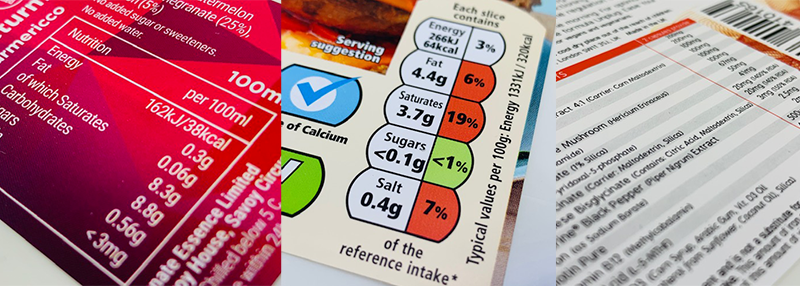What Has Sparked A Revolution In Nutritional Labelling?
This week high street chain Pret A Manger announced they are to launch a full scale roll out of their new full ingredient nutritional labels on all pre-packaged food. The move comes after rightful and prolonged social pressure from campaigners to further regulate food labelling after the tragic events earlier this year.
So at Daymark, we wanted to talk you through what you need to consider when creating pre-packaged food labels in the UK.
What Two Things Must You Declare?
Firstly, according to the Department of Health and Regulation (EU) No.1169/2011 you need to declare two basic things...
- The Energy Value
- The Amount of Fat, Saturates, Carbohydrates, Sugars, Proteins & Salts.
Depending on the size of your label this ideally should be presented in a tabular format, or if space does not allow then the information can be presented in a linear fashion as long as it is easy to read and understand.
You Need To Include Portion Sizes
Secondly, when you present the nutritional facts you need to give the consumer the information PER PORTION. This can take the form of 'per 1 biscuit' for larger food items or grams or millilitres for smaller sizes. This information should be set out with the units e.g. 100g/100ml next to the portion reference and needs to be easily understood by the consumer.
What Should You Do With Potential Allergens?
Legally, there are 14 different types of allergens that must be highlighted on food packaging:
- Celery
- Cereals containing gluten - including wheat ( such as spelt & khorasan) rye, barley and oats.
- Crustaceans - prawns, crabs and lobsters
- Eggs
- Milk
- Lupin
- Molluscs - such as mussels and oysters
- Mustard
- Tree nuts - including almonds, hazelnuts, walnuts, brazil nuts, cashews, pecans, pistachios and macadamia.
- Peanuts
- Sesame Seeds
- Soybeans
- Sulphur dioxide & sulphites
According to the .GOV website you must highlight allergens on the label using a different font, style or background colour and they MUST be listed in the ingredients.
Do I Need To List Vitamins and Minerals?
Vitamins and Minerals need to be listed if they are present in significant amounts. For single portion items they need to be listed if they make up >15% of the nutrient reference value or >15% per 100g/ml. If you do need to declare them then you need to provide the % intake or recommended daily allowance for them in addition to the total amount found in the product.
How Big Does This Information Need To Be?
Regulations state that nutritional information must be written in a font bigger than 1.2mm high. If the largest surface of your packaging or container has an area of less than 80cm2 then this minimum height is reduced to 0.9mm.
Creating a nutritional information section can seem quite daunting, but at Daymark, we have over 45 years' experience creating and designing eye catching and innovative labels that fully comply with EU regulations. Our friendly and experienced customer service team are here to help answer your questions and take the stress out of the production of nutritional labels. Our artwork team will provide you with a high quality proof before we print your labels to ensure that everything is exactly how you imagined and more!
To view our full range of food packaging labels click here
Request your FREE QUOTE/SAMLE PACKHERE
